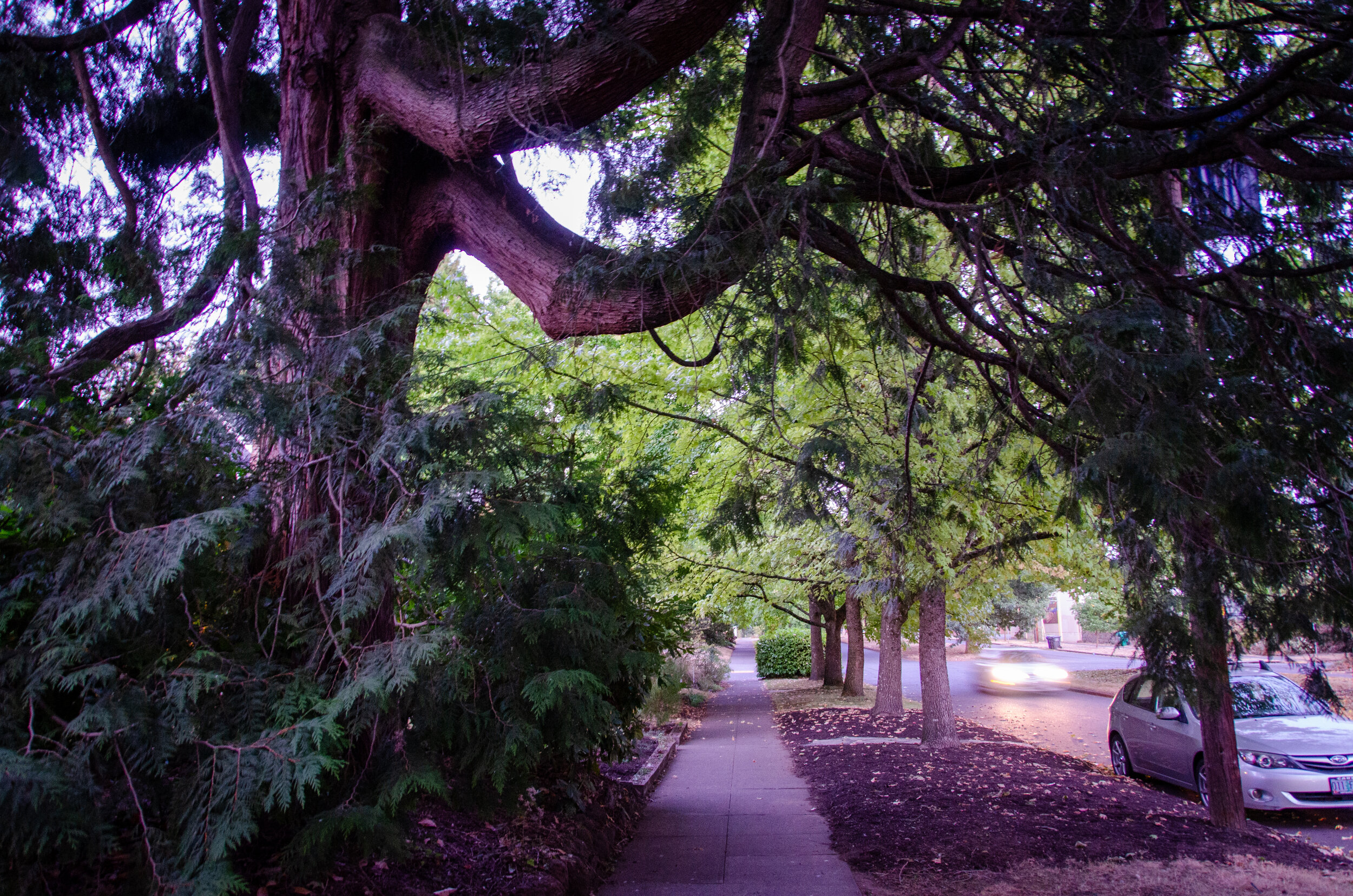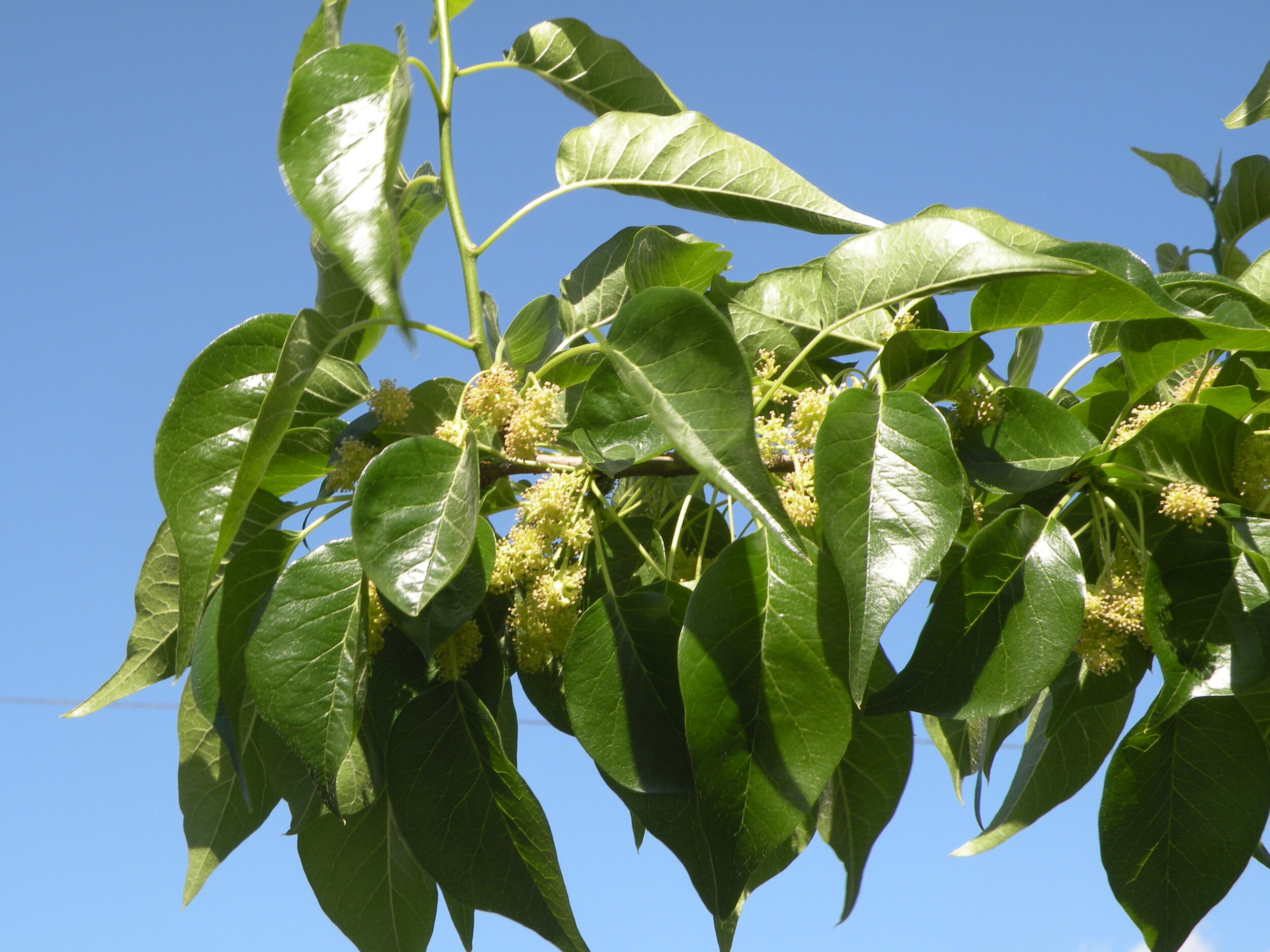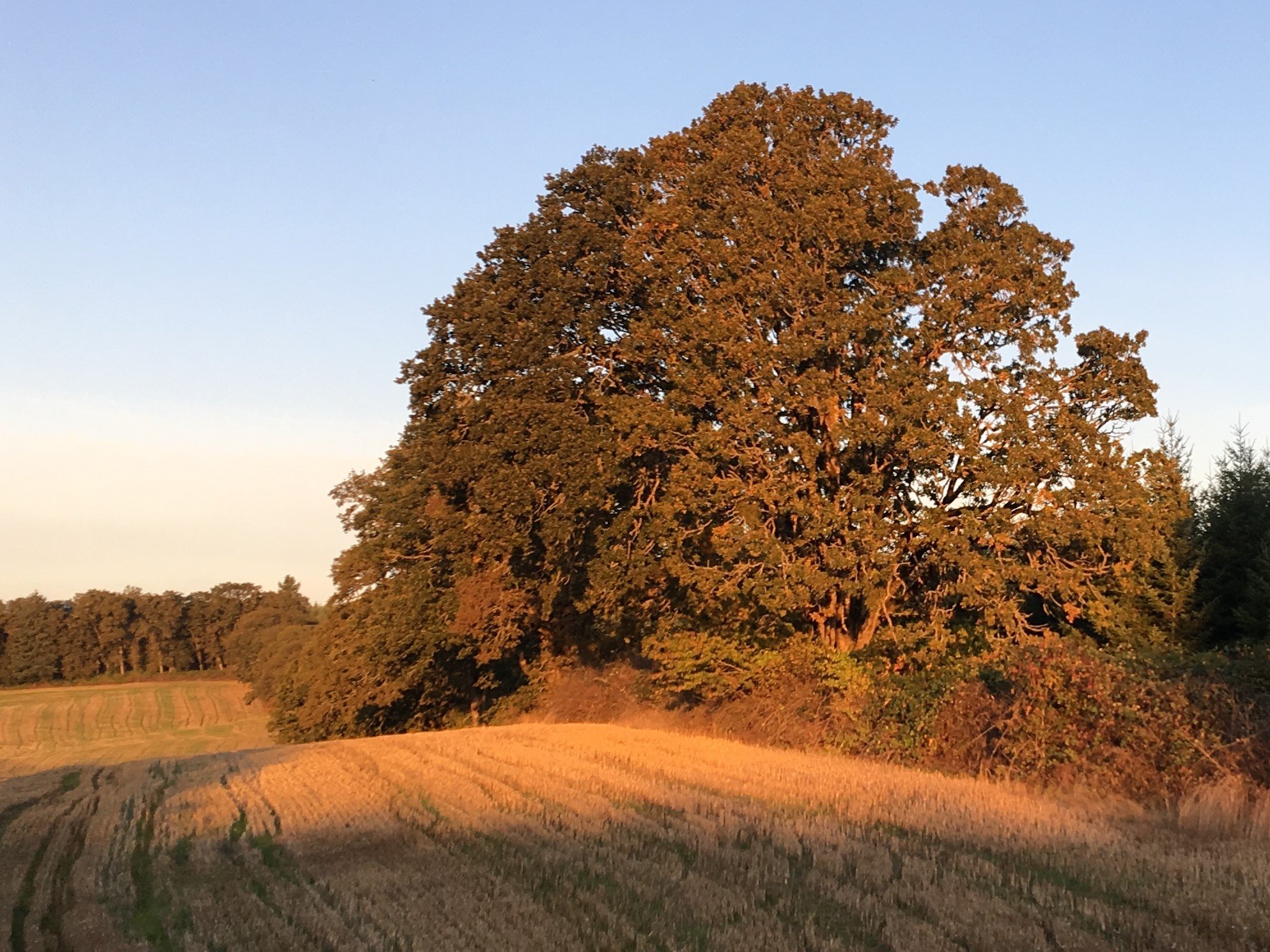Tree Library

Find your Tree in the Tree Library
The Tree Library offers insights into the trees in the arboretum: 46 species in the median alone! And this number is growing as aging trees are replaced with new and vibrant varieties.
The Concordia Tree Team is working to build out the library here. We built detail and photos into our map for now.
To find your place in the Arboretum, and identify and find specific tree locations, see our map>>
Although a common tree in the Midwest, few Western hackberry trees are grown in Portland.
Western hackberry
Celtis occidentalis (Midwestern USA)
Location: One is the easternmost tree in the median between NE 6th and NE 7th.
The name western is only in relation to the East Coast, as this species does not extend beyond the prairies. Once lumped in with the elms, hackberries are now classified in the same family as marijuana - Cannabaceae. Smoking its leaves will disappoint those seeking a high as they don't contain THC or cannabinoids. But birds seek out the small fruits.
Growing only in a few locations in southwest Oregon and northern California, Baker cypress is highly tolerant of drought.
Baker cypress
Hesperocyparis bakeri (SW Oregon, Northern California)
Location: Median block north of Alberta Park - second tree from the west
One of Oregon's most endangered trees, Baker cypress is found in only a few groves on serpentine soils in mountains of Southern Oregon and Northern California. It depends on fire to open its small cones.
While most osage orange trees are thorny and bear cannonball-sized fruit, the cultivar ‘White Shield’ has neither drawback.
White Shield osage orange
Maclura pomifera ‘White Shield’ (Oklahoma)
Location: Two easternmost tree in the median between NE 14th and 13th.
Osage orange is in the fig family. Female trees produce cannon-ball sized fruit, which has discouraged urban planting. White Shield is a male cultivar from Oklahoma selected for being thornless. Excellent tolerance to heat, wind and cold. Should mature to about 35'.
Nativity: just which trees count as native?
The Willamette Valley’s iconic Oregon white oak.
Nurturing natives
When the Linear Arboretum was launched in 2005, not a single tree in the Ainsworth median blocks was a native. Since then, Oregon white oak (Quercus garryana) has been planted, representing one of the trees that has grown in the Portland area since time immemorial. Happiest in full sun, it shows great adaptability to soils and climate, growing from north of Los Angeles to Vancouver Island in British Columbia. The Oregon white oaks along Ainsworth were unfazed by the record-shattering heatwave of June 2021.
Southern Oregon is home to many trees tolerant of heat and drought that may survive better in Portland than some locally native trees as the climate warms.
Almost native
What is a native tree? Defining it is harder than it might seem. Oregon’s climate has seen dramatic changes over geologic time. In many ways our forests are still recovering from the Ice Ages. Southern Oregon, where many trees retreated from the glacial cold, has a greater diversity of trees than Portland. Many are better suited to the hot, dry climate we’re starting to experience than the western hemlock, western redcedar and grand fir that are currently native. Canyon live oak (Quercus chrysolepis) is one example in the Linear Arboretum of a “regional native.” This broadleaf evergreen does splendidly in Portland, surviving without summer water and tolerating 115 degree heat without damage. In 100 years many more trees from immediately south of us may have migrated north to populate our forests.
Ginkgo trees once thrived in Oregon They have only recently returned, having sat out the Ice Ages in China.
Formerly native
Northwest Oregon has millions of trees but very few tree species compared to forests in many other parts of the world. But go back more than 14 million years and Oregon forests were rich in species. The Northwest was home to giant sequoia, ginkgo, dawn redwood, bald cypress, tupelo, beech, sweetgum and sassafras. Enormous lava flows, mountain uplift and multiple glacial advances and retreats wiped out much of that diversity. Fossils of many of the “non-native” trees in the Linear Arboretum have been found in Oregon.
-
Arizona White Oak
Hailing from the mountains of the Southwest and northern Mexico, Arizona white oak is quite drought tolerant.
-
Canyon Live Oak
Canyon live oak is native to southwest Oregon but extends all the way to Baja California and the mountains of Arizona. It is an evergreen with highly variable leaves.
-
Silverleaf Oak
The tree’s lance-shaped leaves are dark gray above and silver underneath.





